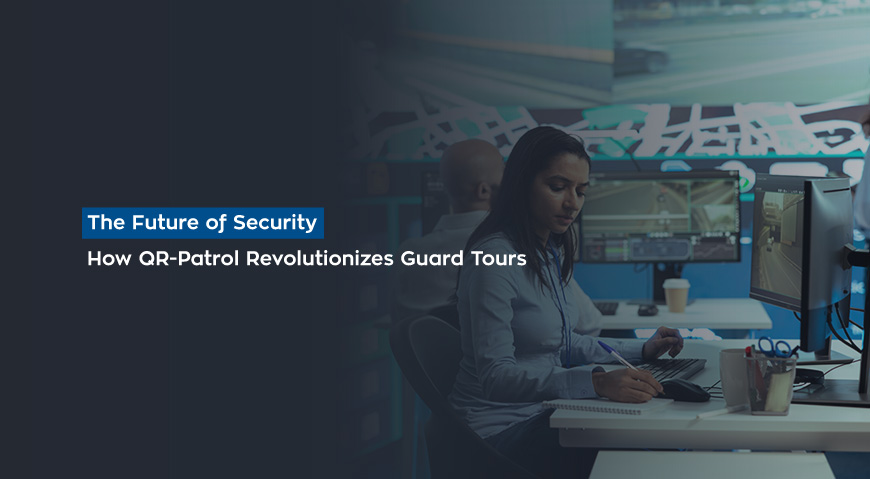- Posted by: blignos
- Published: 03-09-2024
- Category: Security articles
The Future of Security: How QR-Patrol Revolutionizes Guard Tours
The Evolution of Security Technology
Early Security Methods
Long ago, people used simple ways to keep things safe. Guards would walk around and check doors. They used keys and locks. Sometimes, they had dogs to help. These methods were basic but worked for a long time. Then came digital systems. Alarms and cameras became common. These tools made it easier to deal with threats. They also helped guards do their jobs better. Digital systems were a big step forward in security technology. Next, mobile technology changed everything. Guards could now use smartphones and tablets. They could get updates in real-time. This made guard tours more efficient. Mobile technology made it easier to keep track of everything.
Integration of AI and IoT
Now, we have AI and IoT. These are synonyms of smart technology. AI can think and learn like a human. IoT connects devices to the internet. Together, they make security systems super smart. They can predict problems before they happen. This is the future of security technology.
Understanding QR-Patrol
What is QR-Patrol?
QR-Patrol is a workforce and guard tour management system. It uses QR codes and mobile technology. Guards scan QR codes during their tours as the data are sent to a central system. It's a smart way to keep track of the day to day incidents and keep guards safe.
Key Features of QR-Patrol
 Real-time tracking: See what’s happening at any moment.
Real-time tracking: See what’s happening at any moment. Instant reports: Get updates right away.
Instant reports: Get updates right away. Easy communication: Guards can send messages quickly to inform.
Easy communication: Guards can send messages quickly to inform. Customizable: Fit the system to your needs.
Customizable: Fit the system to your needs.
These features make QR-Patrol a powerful tool in security innovation.
Benefits of Using QR-Patrol
Integrating QR-Patrol helps guards and security professionals to do their job more efficiently. While improving safety, QR-Patrol can give control in any difficult situation ensuring fewer mistakes are made.
Comparison with Traditional Guard Tours
Having a traditional guard tour system using paper logs and manual checks can cause a lot of errors in daily operations while keeping it unscalable. Implementing a smarter system to streamline workflows and check processes is a more efficient, smarter way to do what you know best.
Enhancing Guard Tours with QR-Patrol
 Real-time Monitoring: QR-Patrol offers real-time monitoring. Security managers can deal with any incident at any moment and track the resolution in real-time. If there is a guard in need, there is an alert that can be sent to alert so help can be arranged. This is making sure that the workforce is safe and more efficient at their job.
Real-time Monitoring: QR-Patrol offers real-time monitoring. Security managers can deal with any incident at any moment and track the resolution in real-time. If there is a guard in need, there is an alert that can be sent to alert so help can be arranged. This is making sure that the workforce is safe and more efficient at their job. Automated Reporting: With QR-Patrol, reports are easier than ever. When Guards scan QR codes at checkpoints, the system logs the time and location automatically and this saves time and reduces manual errors. Reports can be exported and scheduled so Managers can have a clear view of the operational success whenever they or their business needs to.
Automated Reporting: With QR-Patrol, reports are easier than ever. When Guards scan QR codes at checkpoints, the system logs the time and location automatically and this saves time and reduces manual errors. Reports can be exported and scheduled so Managers can have a clear view of the operational success whenever they or their business needs to. Incident Management: Guards can report incidents right from their phones enabling them to share important information straight to the control center so it can be dealt with. Having a faster response to incidents can ensure a safer environment for everyone.
Incident Management: Guards can report incidents right from their phones enabling them to share important information straight to the control center so it can be dealt with. Having a faster response to incidents can ensure a safer environment for everyone. Improved Accountability: Accountability is key in security. Implementing smarter systems to manage the workforce is ensuring to keep standards high while safety remains a priority. All this, while identifying areas that can be improved.
Improved Accountability: Accountability is key in security. Implementing smarter systems to manage the workforce is ensuring to keep standards high while safety remains a priority. All this, while identifying areas that can be improved.
Security Innovation: The Role of QR Codes
How QR Codes Work
QR codes are like barcodes but better. They store more information and are easy to scan. You just need a smartphone or a QR scanner. When scanned, they can show text, open a website, or trigger an action. This makes them very useful in security technology.
Application in Security Systems
In security systems like QR-Patrol, QR codes are placed at checkpoints. Guards scan them during tours to validate they checked the area that needs to be checked. The data from the scan goes straight to the control center in real-time. Not only that, QR-Patrol can be used to access secure areas or log equipment checks. The versatility and reliability is unmatched.
QR-Patrol’s QR codes can be printed easily through the control center, a solution that makes it cost-effective and easy to use or alter. The data provided through the scan can be automated so human errors are reduced significantly.
Case Studies of QR Code Implementation
It’s quite a common practice in the industry to implement QR codes in the management systems used by businesses. For example, a large Battery Manufacturing facility in Fermont, Ohio used QR-Patrol to improve employee safety and productivity. The Health, Safety and Environmental Supervisor saw a 44 % reduction in incidents related to injuries. That means that the injury rate at the Battery Manufacturing Facility dropped from 3.4 to 1.9 in the course of 2 years of monitoring. Supervisors also reported a better adherence to compliance standards as well as faster resolution to incidents.
The Future of Security with QR-Patrol
It’s in the nature of the industry, security technology, to keep evolving as we’re getting more familiarized with AI practices as well as implementing more IoT devices in the daily work. As QR-Patrol always strives to stay ahead of the curve, a prediction of the industry focus would possibly be on advanced analytics tool space, an area that would help managers make better decisions. Also, we’ll see more features for Mobile devices that would implement GPS tracking in the most efficient way and those advancements will make incident tools even more effective.
Preparing for Future Security Challenges
The future of Security would also bring new challenges. QR-Patrol is a tool for businesses that can ensure the preparedness and agility when things need to be addressed proactively. Real-time monitoring and automated reporting are just the start. By staying updated with the latest technology, companies stay ahead of threats. QR-Patrol is a key tool in this ongoing effort.

















